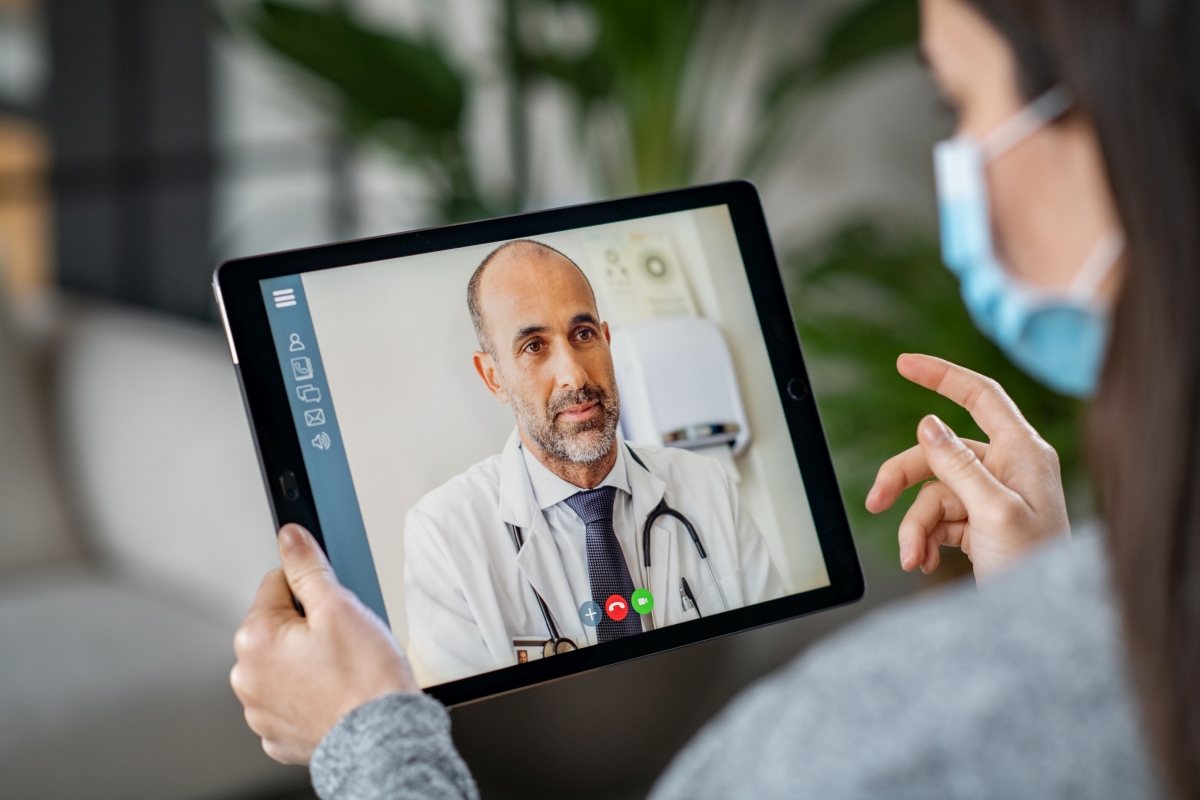Teledoctors: Reinventing Access to Health Care Services
Teledoctors: Reinventing Access to Health Care Services
Blog Article
Exploring the Conveniences and Obstacles of Teledoctors in Modern Healthcare
As the medical care landscape develops, teledoctors have actually become a critical part in bridging spaces in clinical accessibility and effectiveness. While they provide the promise of getting to remote areas and reducing functional prices, the journey is not without its difficulties. Privacy worries, the electronic divide, and cybersecurity dangers posture considerable obstacles that have to be dealt with to harness their complete capacity. Just how can the medical care industry balance these advantages with the fundamental obstacles? This quandary welcomes a much deeper exploration into the transformative duty of teledoctors in forming the future of healthcare delivery.
Expanding Accessibility to Treatment
Telemedicine has actually emerged as a critical advancement in contemporary health care, substantially expanding access to care for varied populaces. By leveraging digital modern technology, teledoctors have transformed the conventional health care shipment model, making it possible for patients in remote or underserved locations to obtain timely medical consultation. This development is particularly advantageous for individuals residing in rural neighborhoods, where the scarcity of medical care facilities and specialists typically brings about postponed or insufficient therapy.
Teledoctors are important in linking the space created by geographical obstacles. With virtual assessments, people can access a broad array of healthcare services without the demand for considerable travel.
The integration of teledoctors into medical care systems likewise supports the management of public health and wellness situations by assisting in rapid response and triage. Throughout pandemics, as an example, virtual examinations lower the burden on physical health care centers, minimizing exposure threats for both people and doctor. As telemedicine remains to evolve, it assures to reshape the landscape of health care availability, making it a lot more efficient and comprehensive.
Cost-Effectiveness of Teledoctors
The cost-effectiveness of teledoctors is a substantial factor driving their widespread adoption in healthcare systems. By decreasing the need for physical framework and in-person visits, teledoctors provide a more inexpensive option to conventional medical care shipment.
Moreover, teledoctors facilitate a more reliable use medical care resources by decreasing unnecessary emergency situation area visits and health center admissions. Clients can access prompt examinations for minor disorders or follow-up treatment, which helps to reduce the burden on overstretched healthcare centers. This efficiency not just brings about set you back financial savings for healthcare providers yet likewise decreases the monetary pressure on patients who could or else deal with pricey health center costs.
Additionally, teledoctors can help in handling chronic conditions much more successfully by giving constant monitoring and timely treatments. This proactive method can protect against issues, consequently decreasing long-term therapy prices. Overall, teledoctors offer a sensible solution to the rising prices of healthcare, while keeping top quality treatment distribution.
Enhancing Individual Ease
While cost-effectiveness plays a critical duty in the rise of teledoctors, improving person benefit stands as one more compelling advantage of this medical care version. With the combination of teledoctors, people can bypass the traditionally time-consuming procedure of organizing and attending in-person consultations.
Additionally, teledoctors supply adaptable organizing, permitting clients to organize assessments sometimes that ideal match their personal and professional commitments. This versatility is invaluable for people stabilizing requiring his response work routines or family members obligations, guaranteeing that health care can be incorporated seamlessly right into their lives. In addition, the capability to accessibility doctor from the comfort of one's home can result in increased person involvement and adherence to treatment plans, as the obstacles to looking for treatment are decreased.
The convenience supplied by teledoctors not just enhances the individual experience however additionally adds to a more reliable and responsive health care delivery system, eventually sustaining far better health end results.
Resolving Personal Privacy Problems
Amidst the growing fostering of teledoctors, privacy worries become a significant consideration. As health care increasingly counts on electronic systems, guaranteeing the privacy of individual info ends up being paramount. The digitization of clinical records and the use of telecommunication modern technologies demand durable protection measures to secure sensitive information from unauthorized accessibility and violations.
Doctor need to abide by rigorous policies, such as the Health Insurance Coverage Portability and Responsibility Act (HIPAA) in the USA, which establishes nationwide requirements for protecting clinical details. Compliance with such guidelines is essential in preserving patient trust and guaranteeing their information is managed responsibly. Encryption of data, secure interaction networks, and regular audits are a few of the actions that can be executed to boost data protection.
Regardless of these procedures, obstacles linger. Cybersecurity hazards are advancing, and health care companies have to continue to be alert to brand-new susceptabilities. In addition, informing both clients and doctor about finest methods in information privacy is important. This consists of recognizing the limitations of data and the importance helpful hints of protected login qualifications. teledoctors.
As teledoctors become extra important to health care distribution, dealing with privacy issues is important to ensure both the effectiveness and trustworthiness of these services.

Browsing the Digital Separate
Connecting the digital divide is a critical difficulty in the extensive adoption of teledoctors. teledoctors. This divide incorporates differences in accessibility to electronic innovation, especially among country, low-income, and senior populations. These groups frequently do not have the necessary tools, dependable internet connectivity, or electronic proficiency required for efficient participation in telehealth solutions. Subsequently, the advantages of teledoctors-- such as raised ease of access and ease-- remain inaccessible for lots of people who might most profit from them.
Efforts to mitigate this divide demand a multi-faceted technique. Policymakers have to prioritize facilities growth to boost net accessibility in underserved areas. Furthermore, campaigns to fund technology for low-income houses can play a pivotal role in ensuring equitable access. Health care carriers and neighborhood companies need to collaborate to use electronic proficiency programs, encouraging people to navigate telehealth systems confidently. Additionally, making straightforward user interfaces can better hop over to here enhance access for all demographics, especially the elderly.

Conclusion
The assimilation of teledoctors right into modern-day health care uses substantial benefits, including raised access to care, cost-effectiveness, and improved person comfort. However, obstacles such as privacy problems, the electronic divide, and cybersecurity threats need to be resolved to optimize these benefits. By applying durable data protection procedures, boosting electronic literacy, and ensuring protected technological framework, the possibility of teledoctors can be fully realized, advertising fair healthcare shipment and changing the health care experience for all individuals.

Report this page